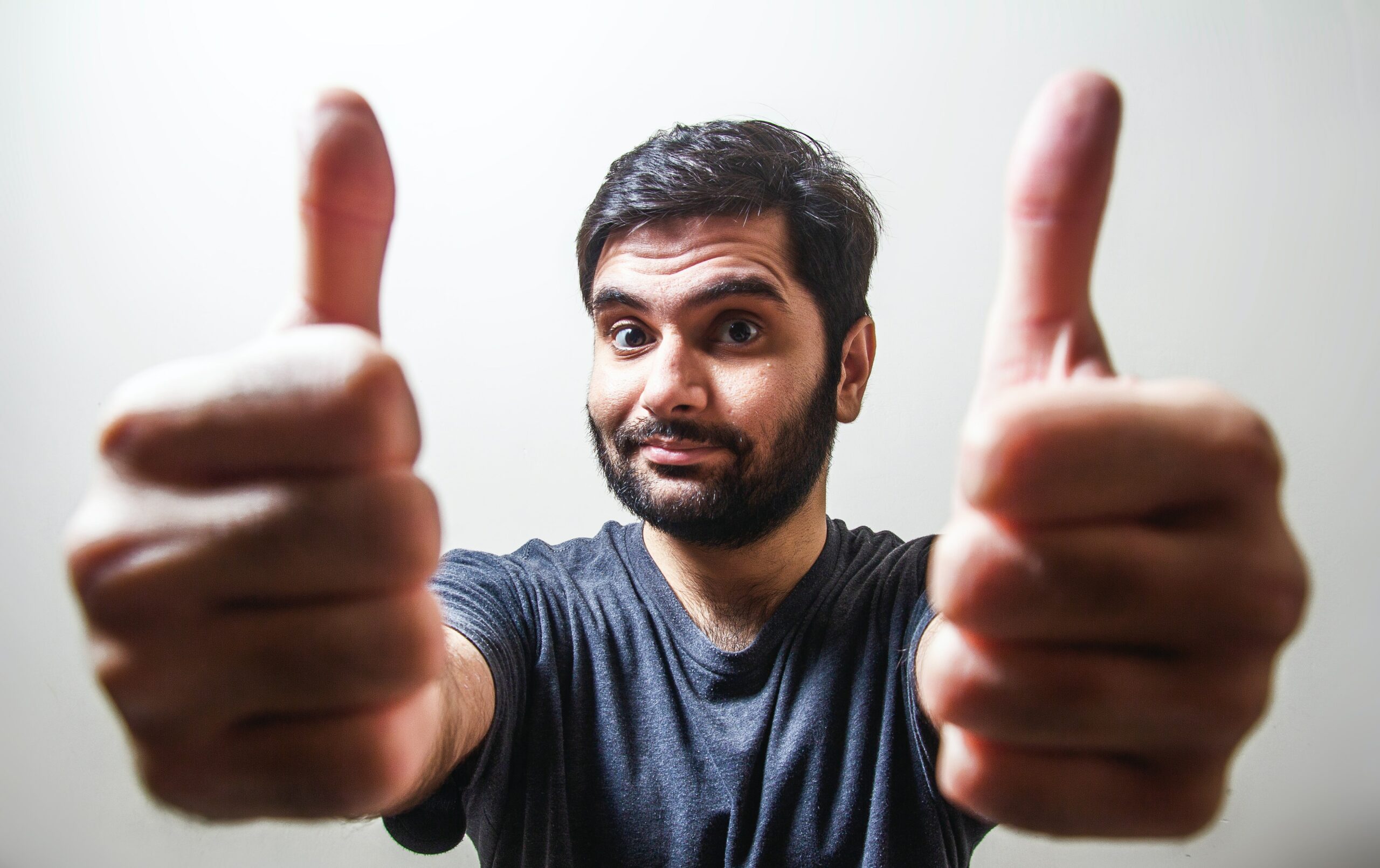I’ve changed many habits during the pandemic, from how I have business meetings to how I grocery shop. I am not the only one; people have changed so many routines. Today, we will talk about what we can learn from the pandemic and discuss the five rules for changing your customer habits.
We discussed habits on a recent podcast. Many years ago, I read The Power of Habit by Charles Duhigg, and I have been fascinated by habits ever since. Understanding habits is essential in Customer Experience management because a lot of customer behavior is habitual.
So…What is a Habit?
In its most general terms, a habit is a learned predisposition to react in a certain way based on a particular set of cues. Habits dwell in this distinction between our automatic, intuitive mind and our deliberative, rational mind. The intuitive part of your brain is continually looking for ways to help, to make things easier. When you engage in repetitive behavior, then that automatic part of your brain starts to recognize it. When the system recognizes that you are engaging in an activity where that repetitive behavior occurs, it will automatically pull up memories and routines to make it easy for you to do what you have in the past. Once you repeat this cycle a couple of times, you have a habit.
We can try to form habits on purpose, like jogging after we wake up. Or we can develop habits subconsciously, like choosing the same brand of toothpaste in the toothpaste aisle. Bad habits often form subconsciously. Duhigg describes in his book how every day at 3 pm, he would go to the vending machine and buy a cookie. It didn’t take long either; the intuitive part of our brain responds quickly to sugar. Virtuous habits, like the early morning jog, may not provide any automatic rewards to our intuitive minds and therefore are harder to form and easier to break. Sugar, as you might already know, is easy to start and hard to break.
The Five Rules for Changing Your Customer Habits
When you manage customer behavior in a Customer Experience, customer buying habits are essential to understand, from the reasons they engage in habitual behavior to the rewards they receive. This understanding is crucial if you need to change customer habits.
To that end, here are the five rules for changing your customer habits:
- Understand your customer habits.
- Understanding customer triggers.
- Distract your customer from their existing habit.
- Reinforce new habits with rewards.
- Measure the difference.
Let’s take a closer look at each of these.
Rule #1: Understand your customer habits.
Duhigg describes the stages of the habit cycle. There is a trigger or Cue first, and then a behavior occurs in Response, followed by a Reward. To use his afternoon cookie example from the book, the Cue was arriving at 3 pm. The Response was to buy a cookie from the vending machine. The Reward was the cookie goodness, and the reported “pick me up” he felt for the rest of the afternoon.
I love the structure of Duhigg’s cycle but I would add one more stage: Repeated Behavior. The Intuitive System won’t recognize the pattern unless all three of those things happening at least a few times.
Rule #2: Understanding customer triggers.
Ideally, the purpose of this newsletter is to get customers to form habits to purchase your products and services. To change habits, you should understand the trigger. To explain why let me share an example that I learned from my interaction with Delta many years ago.
Before we checked into flights on our phones 24 hours before the flight, we queued up in the airport check-in lines. One day, when I was queuing up, I saw self-check-in kiosks. I ignored them and got in line. However, Delta had employees combing the queue, and one of them convinced me to walk over with him and try self-check-in. I did, and then I never lined up in the check-in line again.
They changed my habit. My trigger was entering the airport and going to the line. However, Delta physically disrupted my motivation by walking me to the kiosk and trying self-check-in to help form a new behavior and reward.
It is vital to determine what those triggers are when you want to change habits. The pandemic has already started the disruption. We had a wave of stimulus resets when the pandemic started. We’re going to have another one as we come out of it and form new routines. Organizations might assume that everyone’s going to go back to their old habits. But they won’t, and this moment is a massive opportunity for us to install a new pattern or continue with a routine we want our customers to have. So, think about triggers because they are your entry point and where you have the opportunity.
My advice for identifying triggers is to think about the environment that causes that automatic behavior. Where are they, and what are they doing? Those are all the things that could serve as triggers.
Then, consider what you want customers to do. How could the environment activate that behavior, and what things in the atmosphere could you change? Which is an excellent lead into rule three…
Rule #3: Distract your customer from their existing habit.
If you’re changing a customer’s habit, you’ve got to distract them. You’ve got to get in there somehow and change it.
When people change lifestyles for some reason—like getting married or having a baby, or going on vacation—there is an opportunity to change habits. Now, if you want them to keep doing what they are doing, you need to get their attention in the new pattern and insert yourself in there to keep them coming back to you. However, if you want to change their behavior, to keep them from habitually buying from the competition, you might be able to use this time to change their habit to purchase from you instead.
One of the methods you see in grocery stores is free samples. The representative can distract customers from their usual patterns, disrupt triggers, and get customers’ attention by giving them a taste. Organizations need to determine how they can interrupt the habit from the customer’s perspective.
Rule #4: Reinforce new habits with rewards.
 Habitual rewards work best when they are intuitive, automatic rewards. When you do something that is appealing to your intuitive system, then that reward reinforces the behavior. If it’s an abstract reward, like retirement savings, where the reward is off in the distant future, that is difficult to form because there is no intuitive reward for that.
Habitual rewards work best when they are intuitive, automatic rewards. When you do something that is appealing to your intuitive system, then that reward reinforces the behavior. If it’s an abstract reward, like retirement savings, where the reward is off in the distant future, that is difficult to form because there is no intuitive reward for that.
When getting customers to form habits, determine what automatic reward you can use to reinforce the new behavior.
We talked about habits with a client who wanted to encourage people to use a particular type of credit card. In the brainstorming session, they thought about making the card metal to create a ringing sound when you plunk it on the table. The cashiers might comment on it because it is heavier and denser than other cards. These might serve as an automatic reward to the user, to make users feel more important because they have this distinctive card. Triple points you can redeem in six months don’t have the same intuitive-reward feel that would drive habitual usage.
Rule #5: Measure the difference.
This rule is essential if a bit boring. I included it in the list because there’s no point in doing all this stuff unless you’re going to get the results you want. The only way you’re going to know what your results are is by measurement. Ensure that you measure customer habits before the changes, too, so you can check the difference.
Like everything else in behavioral science, changing customer habits cannot be a one-and-done solution. It requires measurement, refinement, and knowing what’s going on in as close to real-time as you can manage.
The last thing that I’ll say about habits is to use these five rules sparingly and appropriately. As powerful as these ideas are and as enthusiastic as we are about them, people should remember that habits are not the appropriate framework for understanding all customer behavior. We can all get excited about some theory and try to force-fit it onto every customer situation. But it won’t fit in every case.
Small, subtle changes can result in significant differences in outcomes. As much as you now know about habits, small changes in how you implement your tactics to change them could lead to success or failure. If you’re not measuring it, then you don’t have opportunities to make adjustments. Those small tweaks could turn something that’s good into something terrific or transform a program that’s a failure into a wild success.
To hear more about this idea in more detail, listen to the complete podcast here.
Colin Shaw is the founder and CEO of Beyond Philosophy, one of the world’s leading Customer experience consultancy & training organizations. Colin is an international author of six bestselling books and an engaging keynote speaker.
Follow Colin Shaw on Twitter @ColinShaw_CX


